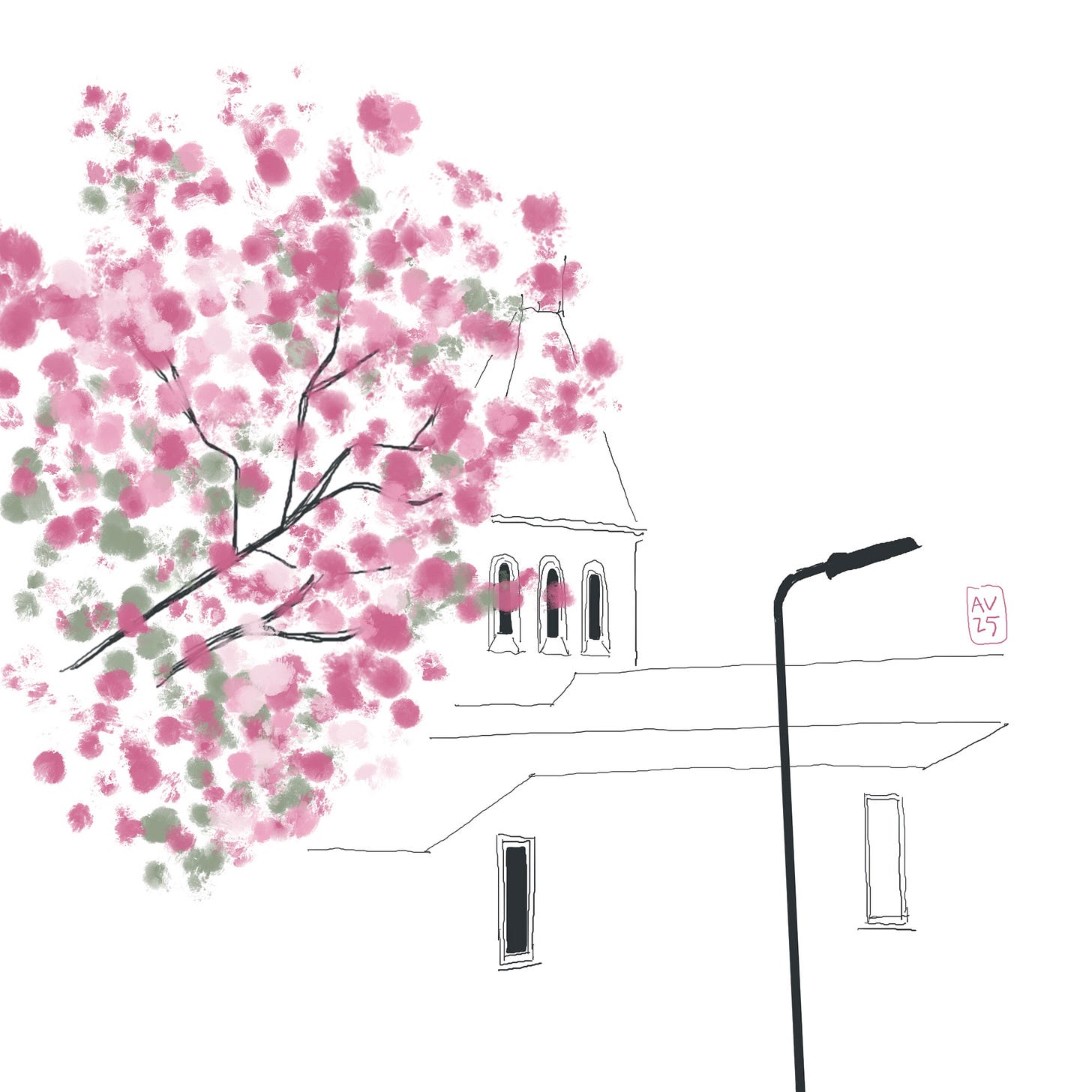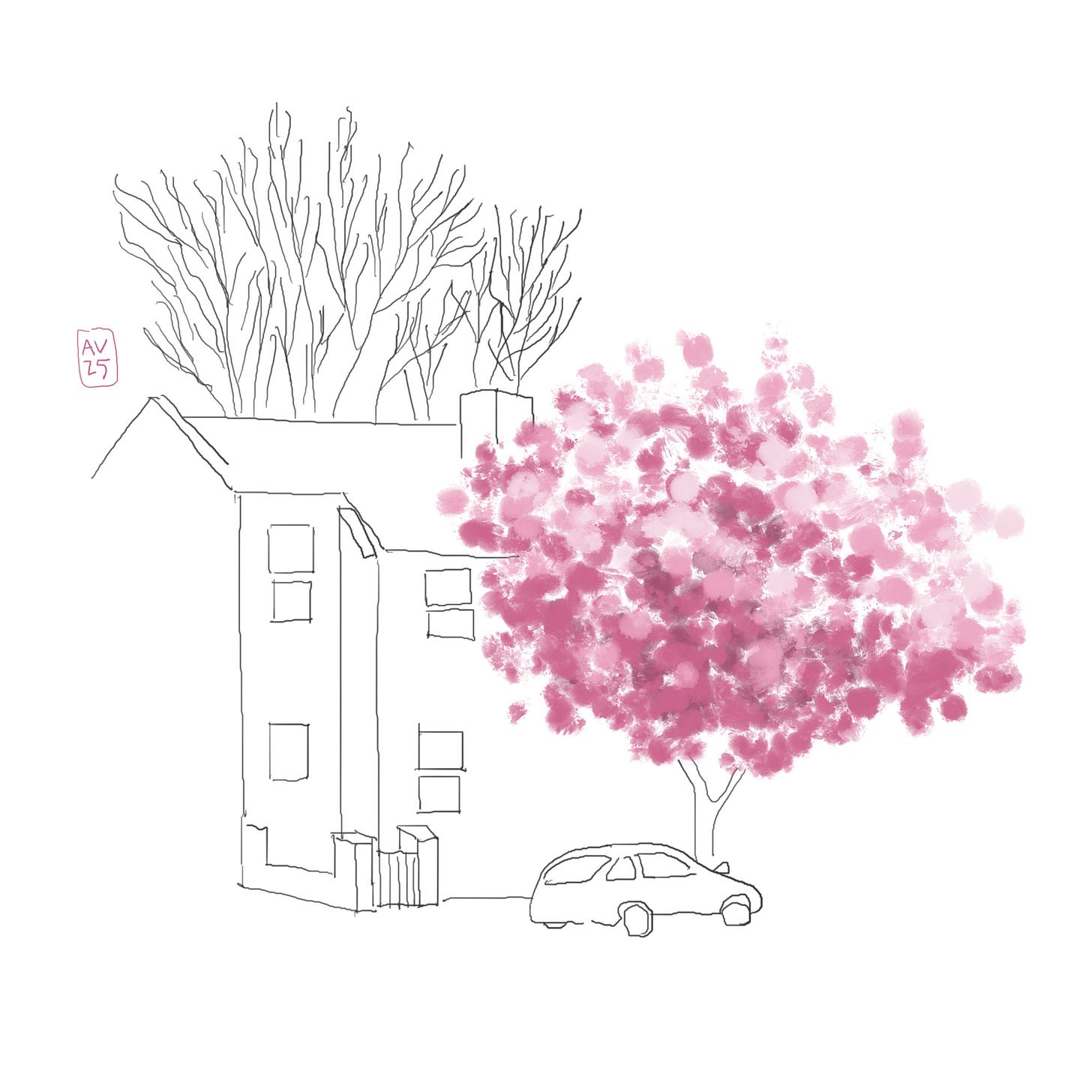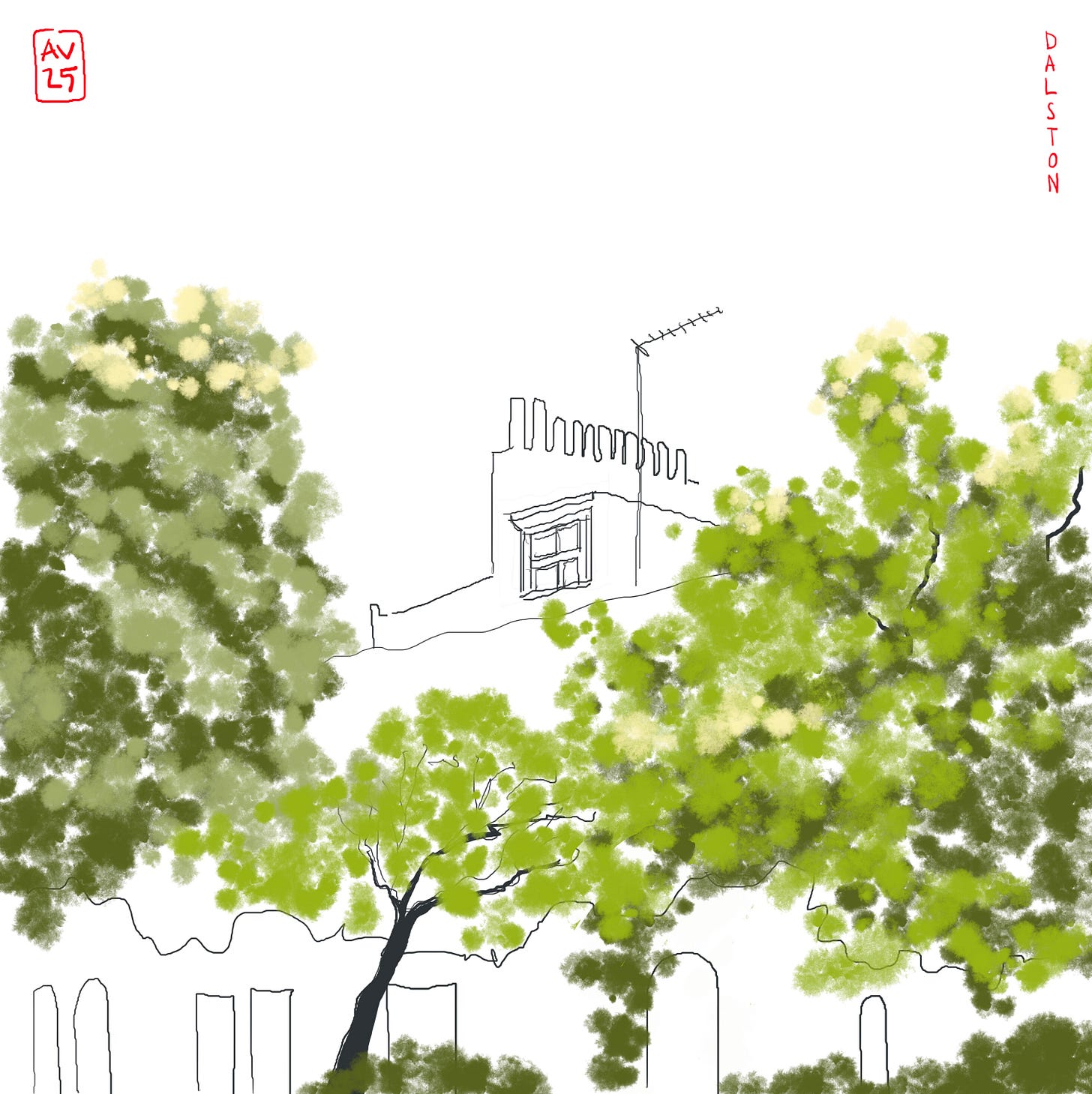It’s the most beautiful spring here. (…) It’s spectacular. And I’m getting it down. (…) it’s all just amazing. (…) People just don’t notice the spring sometimes. — David Hockney
Part I: Before Easter
It starts happening in March—some years earlier than others, but usually around the equinox. The days begin to stretch rapidly, like a teenager growing centimetres by the day. The light sharpens, the air freshens, and the trees and plants—first the magnolias, then the cherries, and later the wisterias—burst into bloom, filling the air with freshness and the streets with colour. It’s spring in London.
Autumn has always been my favourite season, but spring is slowly growing within me—especially since I moved to London almost a decade ago. The spring here is very different from the warm, often muggy one I grew up with. London’s spring is radiant: more light, longer days, still chilly at times, but increasingly sunlit. A promised land after a long, grey winter. It’s definitely my favourite season to experience in the city—and the one I always recommend to visitors. If you pay close attention, you’ll notice how some trees begin to grow some leaves, and how each takes their time to grow and blossom. Each species has its own rhythm, and the city transforms by the day.
Spring is a time of regeneration, of transformation—of waking up from hibernation. The colours of the city, the bees buzzing from bloom to bloom, the scent of flowers... the world around us releasing all this energy. After shedding my own leaves and turning inward this past winter, I’ve recently felt my own creative season change coinciding with the arrival of spring, and I’ve been channelling that energy into new projects. One of them is a series of drawings that explore and express my personal experience of spring here in London.
They’re still a work in progress (I dare say as most works of art are), and also a bit of an experiment—an exploration of tools and techniques I’ve been working with for some time, deeply inspired by Japanese drawings. Last year—exactly a year ago, in fact (time flies!)—I wrote a post about some of these tools and ideas I picked up while visiting an exhibition on Japanese drawings at the British Museum. Much of that still holds true. If you’d like to revisit the post, you can find it here:
Suggest, never reveal
How many lines or strokes does it take to convey the essence of something? A flower, for instance. Or the expression on a face. The movement of a dancer. A landscape full of trees.
Drawing is also about deciding what to leave out. The Japanese and Chinese understood this well. For them, mastering the art of drawing meant capturing the essence of a subject with as few strokes as possible. Simplicity. Less is more. Hokusai’s beautiful drawings are a good example of this.
It’s an approach also embraced by artist Christoph Niemann. In his work, simplicity often carries a bold and witty message. His New Yorker covers are exceptional in this regard. He strips away the unnecessary so we can better focus on the intention of the drawing—and on the essence of the subject itself.
In my own approach to this series of digital drawings, I’ve used a simple black line to sketch the context—the architecture—while painting the blossoms with three tonal variations of the same hue, depending on the species. I’ve also made space—literally—by leaving areas of the composition blank. There’s no need to draw everything; some things are better left suggested. As my university art teacher used to say: hay que sugerir, nunca mostrar—’you must suggest, never reveal.’
Draw what you love, love what you draw
This series is also a tribute to two things I love: London and spring blossoms. Both appear juxtaposed in these compositions, each drawn in a different style, as described earlier.
Drawing what one loves makes everything easier. The same applies to reading: a book on a subject we’re passionate about is far more enjoyable than one that doesn’t speak to us. It’s the same with drawing from life. Some artists are drawn to people—they create portraits (Celia Paul, Paula Bonet) because they’re fascinated by human nature or psychology. Others focus on the body, captivated by flesh and form (Lucian Freud). Some paint nature, simply because they love it (Hockney, Van Gogh). I love what I do—designing the built environment—so I naturally gravitate toward urban sketching, drawing places, buildings, and abstract forms that evoke a sense of space.
My process begins with observation. I take photographs—sometimes quick sketches or notes on site, but mostly photographs—and then, for this series particularly, I sketch on my iPad, using the image as reference (never tracing). The drawings are usually quick studies. It’s the colour that brings life to the blossoms or some key elements, like a red-brick iconic building, while the lines remains in the background, framing the scene.
Part II: May
After almost two weeks in Spain, I return to London and notice an explosion of green—suddenly, it’s almost summer. It’s still May, though, but spring has moved into a new phase: the wisterias are now in bloom, the cherry blossoms have now vanished, and most trees are crowned with thick, lush canopies. London has exploded in greens.
From my window, I can no longer see the full outline of the church which is now covered by tree canopies, and the air is beginning to fill with too much pollen. I notice something else too: just how green London really is. Perhaps that’s another reason why I love this city.
I finish a few more drawings from this series just in time to start a new project—or rather, a small assignment.
✏️✨
Happy sketching!
Ana











Gorgeous pictures 🌸
Beautiful! I’m always looking for ways to sketch faster, maybe I will try this technique of only painting part of it!